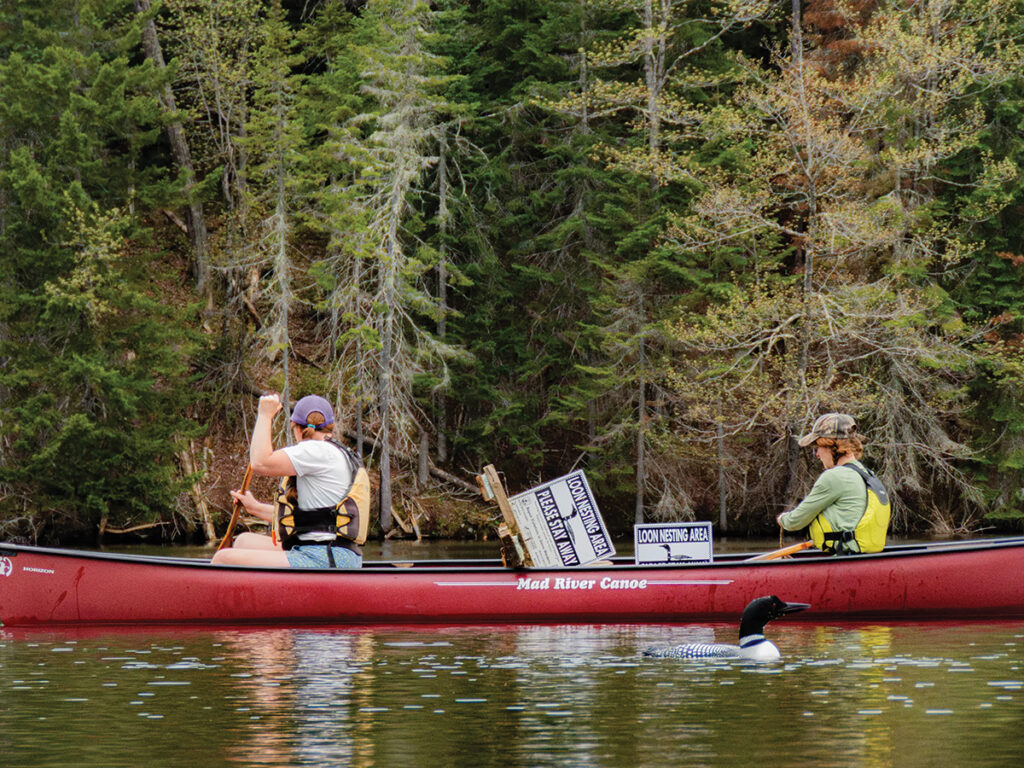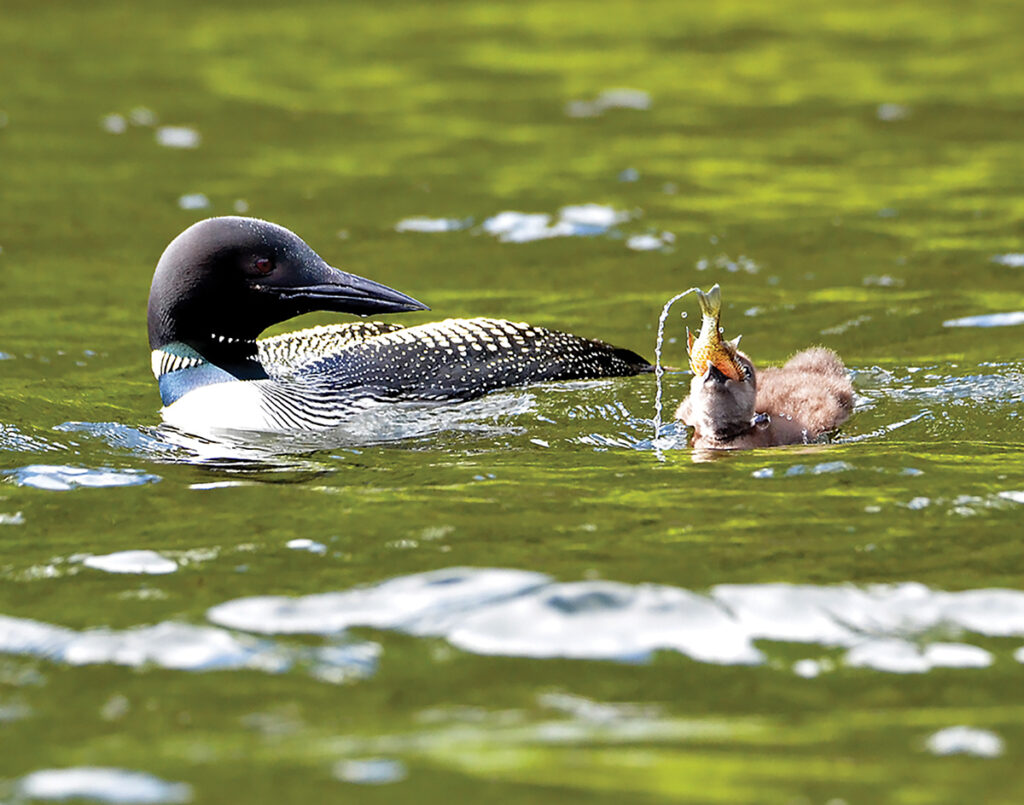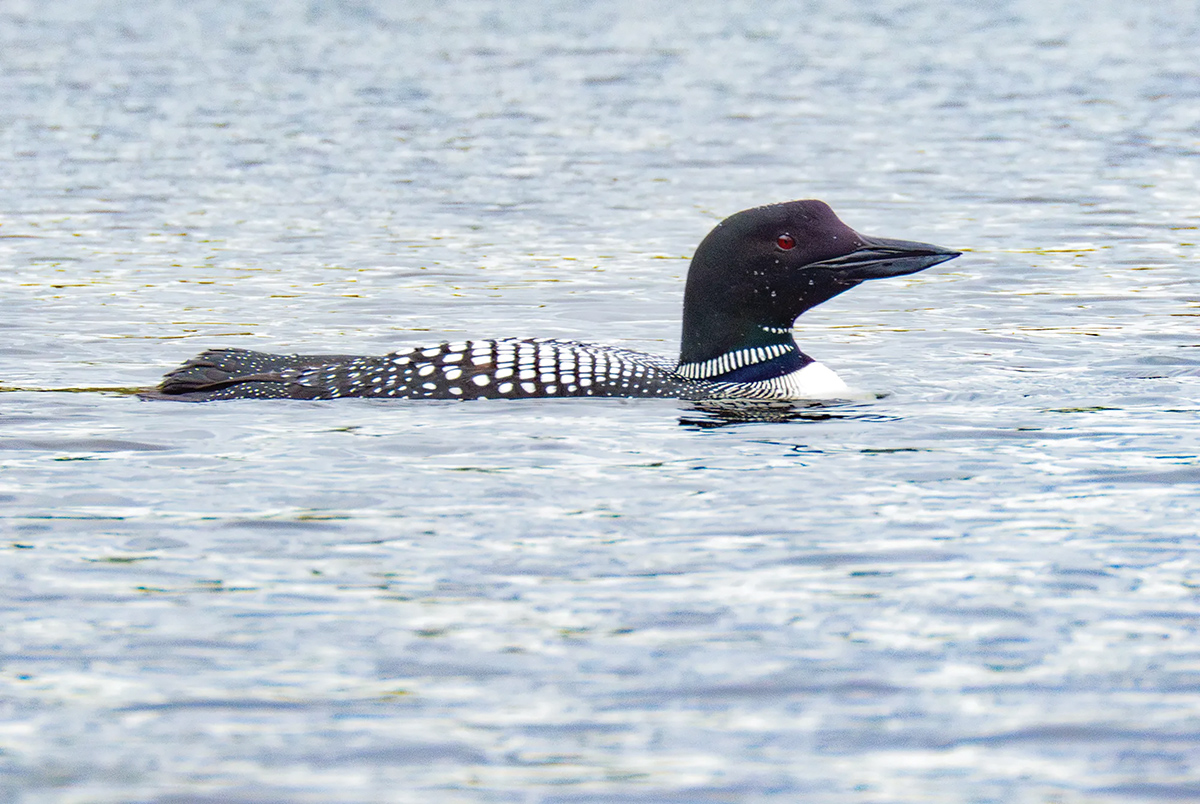By Izzy Wagner/VTDigger
Vermont’s adult loon population is at an all-time high, but scientists have noticed a recent decrease in the number of chicks surviving.
In 2024, Vermont saw a record-breaking 123 nesting pairs, 11 of which landed at first-time nesting sites. Out of the 125 loon chicks that hatched in 2024, 65% survived through the end of August, slightly below the 2004-23 average of 76%, according to the Vermont Center for EcoStudies.
Eric Hanson, a biologist for the Vermont Loon Conservation Project, said the three main reasons for less chick survival are competition, habitat loss, and predation from eagles and other wildlife.
Flooding in Vermont in recent years has contributed to habitat loss and affected nesting success. Twenty-one nests were flooded in the summers of 2023 and 2024, a stark contrast to the one flooded nest reported during the drier summers from 2020 to 2022, according to the center’s 2024 loon season summary.
Nesting loons make their homes in smaller lakes when larger lakes are taken by other pairs of loons with established breeding grounds there. These sites tend to have more marginal habitat, often lacking protective features like marshes or islands. Nests built there are more exposed to predators, such as eagles and snapping turtles. Adults must also leave small lakes to feed in bigger areas where fish are plentiful, and the additional time spent away from their young can lead to their neglect, according to the season summary.
A higher presence of adult loons also creates territorial conflict, resulting in “turf battles” between loons that could prevent a pair from nesting, Hanson said. Chick casualties can also occur during these encounters.
However, lower nesting success rates are part of a natural process as the loon population begins to level out, he said.
“Loons overall are doing really well, and we don’t need to see success all the time,” Hanson said.
Vermont Fish & Wildlife Dept. biologist Jillian Killborn said this new phase is a balancing act on the landscape. After years of great success in increasing the loon population, slower growth and productivity is to be expected.
“With any wildlife population, there’s natural checks and balances that are built into populations when they start to get too high or exceed carrying capacity on the landscape,” Killborn said. Now, scientists are figuring out how many loons will remain in Vermont long term and where, she said.
Despite the drop in chick survival rates, Vermont loon chicks do better than those in eastern Maine, New Hampshire and the Adirondack region, according to preliminary data from the Vermont Center for Ecostudies.
Since 1983, volunteers and biologists have been gathering on the third Saturday of July for LoonCount Day, a survey of adult and nesting loons in water bodies statewide. On July 19, Hanson said he expects more than 200 participants to visit 175 lakes in Vermont to tally the number of birds. These efforts are important for tracking loon health, nesting success and the identification of emerging threats, he said.
“We’re just trying to hit everything,” he said. “We’ve expanded that out as loons start to land on smaller ponds compared to what they used to do.”
In tandem with LoonCount Day, the Vermont Loon Conservation Project at the Vermont Center for Ecostudies organizes an annual loon monitoring program, during which volunteers take regular trips to lakes throughout the summer season to post signs in nesting areas and keep tabs on new and known nesting pairs.
The nesting signs respectfully ask boaters to give the loons a little space since they are highly territorial, especially during breeding season. If humans get within 10 feet of their nest and the birds feel it’s threatened, they’re more likely to abandon it, Hanson said.
In attempts to curb disruptions along ecologically sensitive shorelines, Vermont passed one of the most protective statewide wake sport regulations in the country in April 2024. However, Hanson said kayakers and people fishing in boats close to the shore create more harm for loons than far-off wake boats.
“If we can give them that little bit of space, they’re more likely to hunker down and watch you go by,” he said.
In addition to shoreline disturbances, recreational fishing poses another serious threat to loon survival. After a period of decline, loon deaths due to lead poisoning from ingesting tackle have risen again over the past six years, Hanson said. Ingestion of lead tackle, monofilament fishing line and fishing hooks remains the cause of more than half of loon deaths in Vermont.
Vermont banned the use and sale of small lead sinkers in 2007, but despite the ban’s initial success, loons are still ingesting poisonous tackle, according to Hanson and Killborn. To address the issue, the Vermont Loon Conservation Project partnered with lake associations and the Fish & Wildlife Dept. last summer to install lead tackle and fishing line collection sites at around 30 public boat access sites, which they plan to add to this year.
Responsible fishing, boating and recreation are vital to loon health and survival, Killborn and Hanson said. As Vermont’s loon population stabilizes, they emphasized that the next phase of conservation will depend on how well humans learn to share the landscape.
Either way, Killborn said loon numbers are increasing at a sustainable rate, and overpopulation is not yet an issue. “I’m not sure if we’ll ever get there, depending on conditions,” she said.

Volunteers contribute to monitoring efforts for Vermont’s loons by placing signs along shoreline nesting sites at Green River Reservoir in spring 2025.

Gotcha! (Gulp) chick feeds on a sizable fish (proportionally) at Bald Hill Pond in Westmore.




